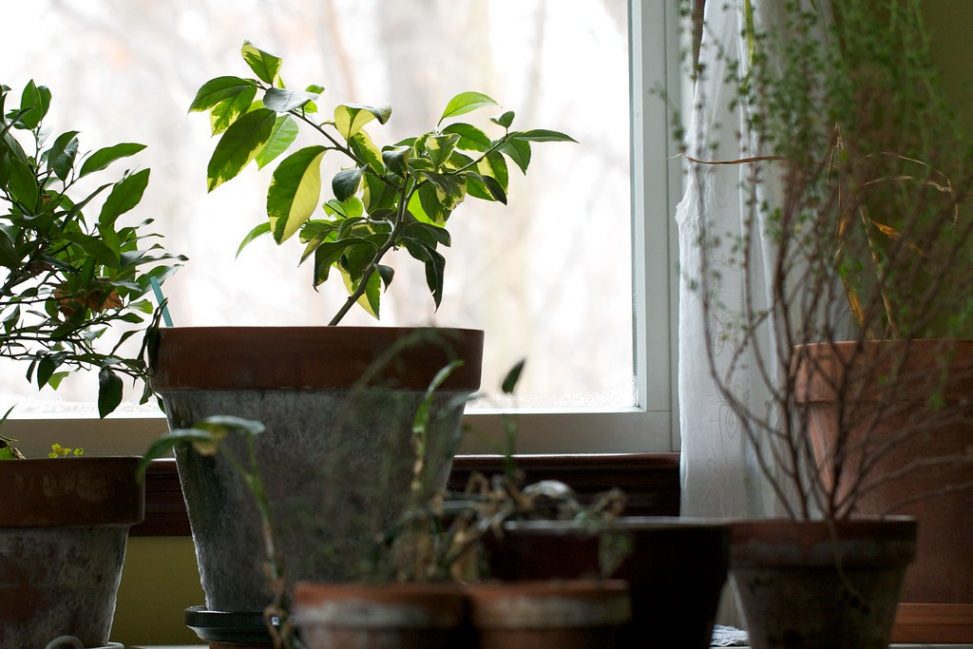Some of us have been blessed with a green thumb while others have difficulty with their plants lasting the week. To be fair to so-called “black-thumbed” readers, it’s not exactly easy to tell what the cause of a plant’s ailment is; for crying out loud, who knew cacti could get sunburns?

Strawberries are one of the plants monitored in this study. Picture courtesy of Creative Commons.
Fortunately, a publication in April 2020 from MIT may be the answer to all plant parents’ prayers. A team of engineers has developed a way to track how plants respond to a variety of everyday stresses.
According to the head of the study, Michael S. Strano, plants use bursts of the chemical hydrogen peroxide to signal that it has been injured. The distress beacon stimulates nearby leaf cells that then produce the necessary materials to aid in the healing process. This can be seen when you pluck off a leaf: within the span of a few days, a callous has formed to protect the plant from potential infection.
Understanding plants’ response to stress can act as a preventative measure to crop failure.
Strano’s lab has been able to monitor these stress releases via carbon-based nanotubes, extremely small sensors that are embedded in the sample plant’s leaves. The waves of hydrogen peroxide are detected by the nanotubes, and through graphical analysis, the engineers are able to distinguish between different types of stress and different species of plants.
They hypothesize that each plant responds differently to stress because every plant has different mechanisms to counteract the damage. For example, while a cactus is able to be burned by the sun, it has a much higher capability of dealing with sunburn as opposed to being cut in half. This particular study utilized strawberries, arugula, spinach, and other common crops (all of which produced different signals), but in theory, the nanocarbon tube sensors should be applicable to any type of plant.

Picture courtesy of Creative Commons.
This leads the research team to believe their work could be beneficial to the field of agriculture. By being able to identify what stressors impact plant growth the most, farmers can adjust their fields and greenhouses to better accommodate their crops. This, in turn, will produce a higher yield of food.
As of right now, Strano’s lab is able to accurately analyze plants’ stress in response to physical injury, infection, heat, and light damage. In the future, they hope to use this information and method to determine why some plants are immune to certain pathogens and others are not.
Tedrick Thomas Salim Lew, Volodymyr B. Koman, Kevin S. Silmore, et. al. Real-time detection of wound-induced H2O2 signalling waves in plants with optical nanosensors. Nature Plants, 2020; 6 (4): 404 DOI: 10.1038/s41477-020-0632-4

Alex
"This title was very eye catching! That is so interesting that such a ..."
Alex
"This is really interesting! The fact that crops and plants are damaged is ..."
Alex
"Well done, this article is great and the information is very captivating! Ethics ..."
Alex
"I was intrigued throughout the whole article! This is such an interesting topic, ..."
Alex
"This is such an interesting article, and very relevant!! Great job at explaining ..."
Grandpa
"Honey You Did a good job I will forward to my eye doctor "
murphymv
"This article is fascinating because it delves into the details of the research ..."
murphymv
"I agree, adding the photo helped solidify the main finding. "
murphymv
"This is a fascinating finding. I hope this innovative approach to improving transplants ..."
Sherzilla
"This is a great article! I would really love to hear how exactly ..."
Sherzilla
"It's disappointment that these treatments were not very effective but hopefully other researchers ..."
Sherzilla
"I agree with your idea that we need to shift our focus to ..."
Sherzilla
"It's amazing to see how such an everyday household product such as ..."
Lauren Kageler
"I will be interested to see what the data looks like from the ..."
Lauren Kageler
"A very interesting article that emphasizes one of the many benefits that the ..."
maricha
"Great post! I had known about the plight of Little Browns, but I ..."
Sherzilla
"I assumed cancer patients were more at risk to the virus but I ..."
Sherzilla
"Great article! It sheds light on a topic that everyone is curious about. ..."
maricha
"This article is full of really important and relevant information! I really liked ..."
maricha
"Definitely a very newsworthy article! Nice job explaining the structure of the virus ..."
maricha
"It's interesting to think that humans aren't only species dealing with the global ..."
murphymv
"This is very interesting and well explained. I am not too familiar with ..."
Lauren Kageler
"Great article! This post is sure to be a useful resource for any ..."
Lauren Kageler
"Definitely seems like an odd pairing at first, but any step forward in ..."
murphymv
"What an interesting article! As you say, height and dementia seem unrelated at ..."
murphymv
"Great article! I learned several new methods of wildlife tracking. This seems like ..."
murphymv
"Very interesting topic! You explained cascade testing and its importance very well. I ..."
Alex
"This article is really interesting! What got me hooked right away was the ..."
Sabrina
"I found this article super interesting! It’s crazy how everyday products can cause ..."
Erin Heeschen
"I love the layout of this article; it's very eyecatching! The advancements of prosthetics ..."
murphymv
"Awesome article! I like the personality in the writing. Flash Graphene not only ..."
murphymv
"Very interesting work! I don't know a whole lot about genetics, but this ..."
Cami Meckley
"I think the idea of using virtual reality technology to better help prepare ..."
Erin Heeschen
"I wonder if there's a connection between tourist season and wildfires in the ..."
Ralph berezan
"Not bad Good work "
Michelle
"This sounds like it would be a great tool for medical students! ..."